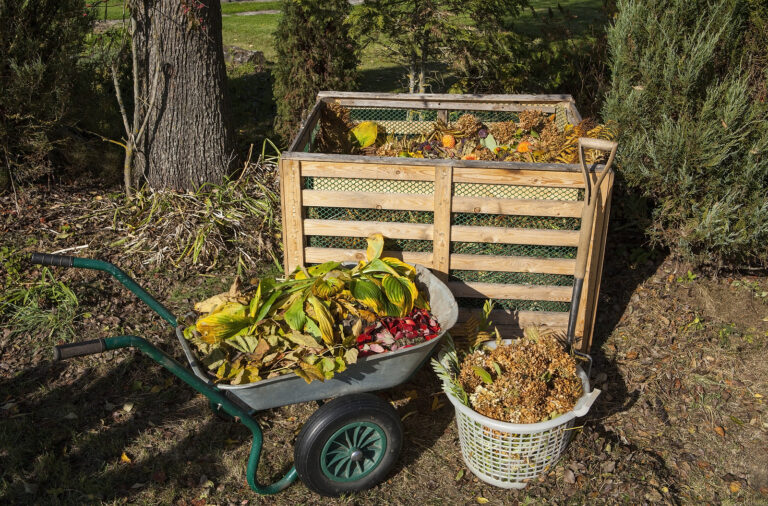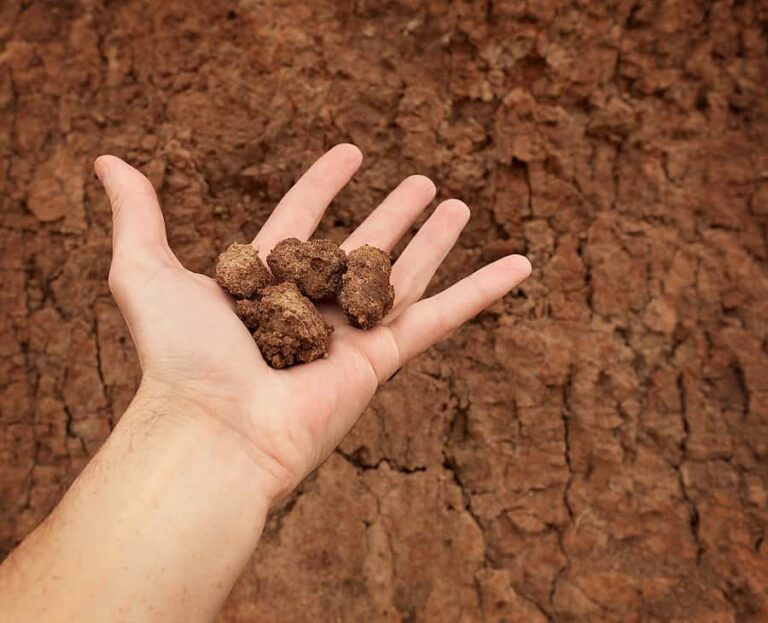Crop Rotation for Soil Fertility and Pest Management
Crop rotation is a cornerstone of regenerative gardening. By rotating plant families in different beds each season, you naturally maintain soil fertility, disrupt pest life cycles, and reduce disease buildup. Over decades of gardening, I’ve found that thoughtful rotation not only strengthens soil but also improves yields and plant health.
Why Rotate Crops?
- Enhance Soil Fertility: Different crops have different nutrient needs and contributions. Legumes add nitrogen, heavy feeders remove nutrients, and root crops recycle minerals.
- Break Pest Cycles: Many insects and pathogens target specific plant families. Moving crops prevents pest buildup.
- Reduce Disease: Soil-borne diseases are less likely to accumulate when plants are rotated.
- Improve Soil Structure: Alternating deep- and shallow-rooted crops prevents compaction and promotes aeration.
How to Plan a Crop Rotation
- Identify Plant Families:
- Solanaceae: Tomatoes, peppers, eggplant
- Brassicaceae: Cabbage, broccoli, kale
- Fabaceae: Beans, peas, clover
- Cucurbitaceae: Squash, cucumbers, melons
- Apiaceae: Carrots, celery, parsley
- Assign Beds by Season:
- Rotate families through different beds each year.
- Avoid planting the same family in the same bed consecutively.
- Include Cover Crops:
- Plant legumes, grasses, or flowering cover crops between main crops to fix nitrogen, build biomass, and attract beneficial insects.
- Consider Harvest Timing and Root Depth:
- Pair short-season crops with slower-growing crops to maximize bed use.
- Alternate deep- and shallow-rooted plants to maintain soil structure.
Tips from My Garden
In my Sonoma Valley garden, I rotate tomatoes, beans, and brassicas across three beds. Legumes like clover between main crops restore nitrogen. Crop rotation has reduced pest infestations naturally and allowed me to minimize synthetic fertilizers. Observing plant performance each season helps me adjust rotations for optimal soil health and productivity.
Quick Reference Table
| Plant Family | Examples | Rotation Benefit |
| Solanaceae | Tomatoes, Peppers, Eggplant | Prevent pests and nutrient depletion |
| Brassicaceae | Cabbage, Kale, Broccoli | Break pest cycles, reduce disease |
| Fabaceae | Beans, Peas, Clover | Fix nitrogen, improve soil fertility |
| Cucurbitaceae | Squash, Cucumbers, Melons | Reduce soil-borne pests |
| Apiaceae | Carrots, Celery, Parsley | Diversify root depths, recycle nutrients |
Conclusion
Crop rotation is a simple yet powerful strategy to maintain soil fertility, reduce pests, and support healthy, productive gardens. By planning rotations thoughtfully, you create a resilient system that nurtures the soil, protects plants, and sustains yields season after season.
Crop Rotation Cheat Sheet: Boost Soil & Reduce Pests
Why Rotate Crops
- Improve soil fertility naturally
- Break pest and disease cycles
- Maintain soil structure and prevent compaction
- Increase overall garden productivity
Plant Families & Rotation Benefits
| Plant Family | Examples | Key Rotation Benefits |
| Solanaceae | Tomatoes, Peppers, Eggplant | Prevents nutrient depletion, reduces pest buildup |
| Brassicaceae | Cabbage, Kale, Broccoli | Breaks pest and disease cycles |
| Fabaceae | Beans, Peas, Clover | Fixes nitrogen, enriches soil fertility |
| Cucurbitaceae | Squash, Cucumbers, Melons | Reduces soil-borne pests and diseases |
| Apiaceae | Carrots, Celery, Parsley | Diversifies root depths, recycles nutrients |
Rotation Planning Tips
- Assign Beds by Plant Family: Avoid planting the same family in the same bed consecutively.
- Include Cover Crops: Legumes, grasses, or flowering crops restore nutrients and attract beneficial insects.
- Consider Root Depth: Alternate deep- and shallow-rooted plants to maintain soil structure.
- Observe & Adjust: Track plant health and yields to refine rotations over time.
Quick Rotation Example (3-Year Cycle)
| Year | Bed 1 | Bed 2 | Bed 3 |
| 1 | Tomatoes (Solanaceae) | Beans (Fabaceae) | Cabbage (Brassicaceae) |
| 2 | Beans (Fabaceae) | Cabbage (Brassicaceae) | Tomatoes (Solanaceae) |
| 3 | Cabbage (Brassicaceae) | Tomatoes (Solanaceae) | Beans (Fabaceae) |
Harvest to Table Garden Tips
- Rotate even small plots for maximum soil health.
- Mix in cover crops during off-season.
- Observe pest activity to fine-tune rotations.
- Keep a simple garden log to track plant families and bed use.
Regenerative Gardening Learning Hub
🌿 Start here: The Complete Guide to Regenerative Gardening and Farming
1️⃣ Soil Health and Living Systems
- How to Build Living Soil: A Step-by-Step Guide
- Understanding the Soil Food Web: Life Beneath Our Feet
- How to Use Compost and Vermicompost in a Regenerative Garden
- Mulching for Soil Health: How to Protect and Feed the Soil Naturally
- Using Mycorrhizal Fungi to Boost Plant Health and Yield
- Minimal Tillage: Why and How to Disturb the Soil Less
- How to Test, Read, and Rebalance Your Soil Naturally
2️⃣ Biodiversity and Polyculture
- How to Design Polycultures and Companion Plantings for Regenerative Gardens
- Integrating Native Plants into Your Food Garden
- Creating Habitat for Beneficial Insects and Pollinators
- Cover Cropping for Biodiversity and Soil Regeneration
- Crop Rotation for Soil Fertility and Pest Management
3️⃣ Carbon Sequestration and Organic Matter
- Why Capturing Carbon in the Garden Is Important and Fights Climate Change
- Increasing Soil Carbon with Compost, Mulch, and Deep Roots
- Biochar: What It Is and How to Use It in the Garden
- How to Keep Soil Covered Year-Round to Build Carbon and Fertility
4️⃣ Water Stewardship
- How to Use Water Wisely: The Principles of Water-Wise Regenerative Gardening
- Building Swales and Contour Beds to Slow and Sink Rainwater
- Mulch, Groundcovers, and Soil Structure for Water Retention
- Harvesting Rainwater for Regenerative Gardens
5️⃣ Perennial Crops and Permanent Systems
- How to Transition from Annuals to Perennials in the Vegetable Garden
- Perennial Vegetables for Regenerative Systems
- Agroforestry and Food Forest Basics for Gardeners
- Integrating Fruit Trees and Shrubs into the Vegetable Garden
6️⃣ Animal Integration
- Chickens in the Garden: How to Use Them Regeneratively
- Using Worms and Bees as Regenerative Allies
- The Role of Animals in Closing the Nutrient Loop
7️⃣ Human and Community Connection
- The Ethics of Regenerative Gardening: Care for Earth, People, and Future Generations
- How to Build a Community Garden Using Regenerative Principles
- Teaching Regenerative Gardening to Children and Beginners
- Healing the Land and Ourselves: The Psychology of Regenerative Practice
8️⃣ Regenerative Design and Planning
- How to Plan a Regenerative Garden from the Ground Up
- Regenerative Gardening Principles Simplified for the Home Gardener
- Home Garden Permaculture
- How to Create a Home Food Forest
- French Intensive Gardening
- Square Foot Gardening
- Zone and Sector Planning for Small Regenerative Gardens
- Using Observation and Feedback to Improve Your System Each Season
9️⃣ Inputs and Outputs: Closing the Loop
- How to Make and Use Compost Tea and Fermented Plant Extracts
- Zero Waste Gardening: How to Cycle Nutrients and Minimize Inputs
- How to Build a Closed-Loop Garden System
10️⃣ Case Studies and Personal Experience



